

|
|
|
|
|
|
|
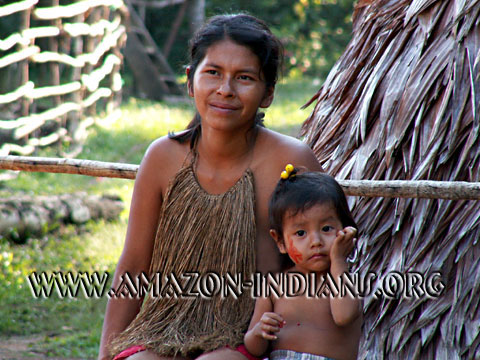
|
|
By Dan James Pantone, Ph.D.
f all the indigenous tribes that inhabit the Peruvian Amazon, the Yaguas are perhaps the most characteristic tribe of the region. In fact, it was the Yaguas who gave the Amazon its name. According to legend when the Spaniards first came to the Amazon, they saw the Yaguas with their blowguns through the trees wearing "grass skirts" and thought they were women. Subsequently, they named the Amazon River after the Greek myth of the Amazon women warriors.
The Yagua language is the only surviving language of the Peba-Yagua linguistic family. The other languages, Peba, Masamae and Yameo, are extinct languages. Peba and Masamae became extinct in the early 20th century while Yameo was last spoken in the 1960's. Yagua is a unique language and linguists have been fascinated by its distinctive morphology and syntax.
Interestingly, they do not refer to themselves as Yaguas. In their native tongue, the Yaguas call themselves Nihamwo ("The People"). This is analogous to the Matsés Indians in that Matsés also means "The People" is their native language.
The "grass skirts" that are typical Yagua attire are not really made of grass. Rather they are made from the fiber of the aguaje palm (Mauritia flexuosa). Often, they will use a red dye (achiote) obtained from the fruit of the tree Bixa orellana to color the fibers and paint their skin. Therefore, the Yagua still rely on the rain forest for much of their clothing. However, the women typically make their skirts out of red cotton cloth that they purchase.
The other key factor, besides making a blowgun that is true, is the curare-tipped darts, and Yagua shamans really are masters when it comes to making curare. The curare vine, Chondrodendron tomentosum is only one of the many ingredients typically used to make curare. Many other plants, including the strychnine plant, Stryens guinesis, are often used to produce curare. The ancient knowledge of making the curare mixture has been passed down, generation to generation, by Yagua shamans. Curare is a fast-acting poison that does not directly kill its victim. Instead, it causes paralysis. Death is caused by suffocation when the victim's lungs are paralyzed.
The Yagua community near Iquitos on the Momon River is small (less than 30 people) and no bilingual education exists. Consequently, the younger Yaguas are losing their ability to speak their native tongue. This is in stark contrast to the nearby Bora community which numbers over 300, has bilingual schools and all the children speak Bora as their primary language.
If you would like to learn how you can meet the real Yagua Indians and find out how you can help them preserve their culture, please feel free to contact me via email at djpantone@amazon-indians.org.
The author, Dr. Dan James Pantone, is the editor of Amazon-Indians and an ecologist currently working with the Movement in the Amazon for Tribal Subsistence and Economic Sustainability (MATSES), a non-profit association that is helping indigenous people so that they themselves can preserve their culture and lands in a sustainable and independent manner. |
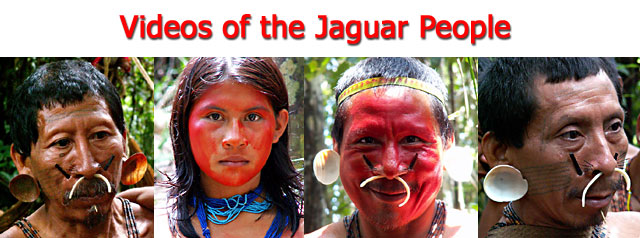
| Return to Main Page | Previous Page | Next Page |
| © Copyright 2004-2012 Dan James Pantone, all rights reserved, Yaguas |
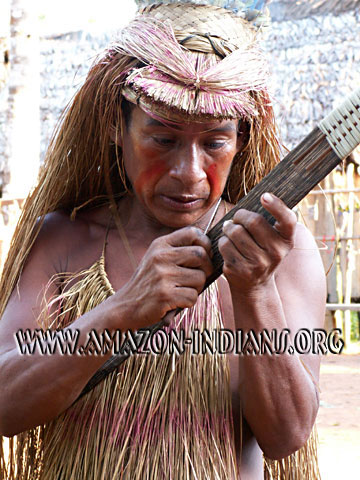
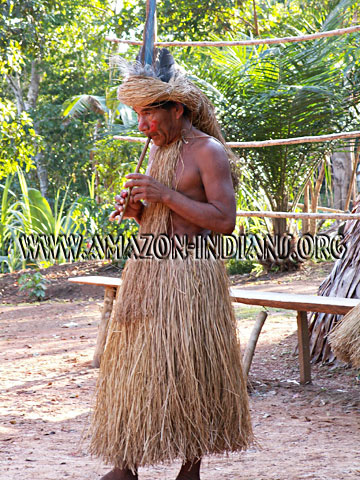
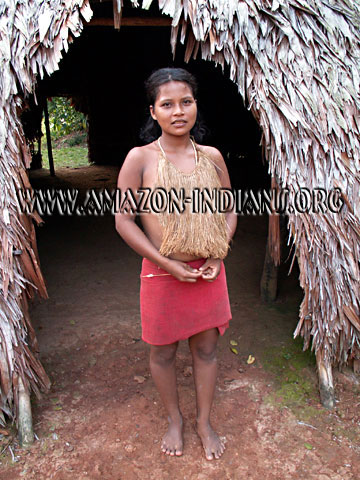 Fortunately, the
Yagua have not been ravaged by
alcoholism as have been many other Amazon tribes. They do, however,
have their own traditional alcoholic beverage called masato, which is
made by chewing and fermenting the root of the yucca plant.
Masato is often consumed by the Yaguas in large amounts during festivals (masatiadas),
some of which last four days. Traditional dances (atunas) are
performed during which they play music created with native instruments such as
the flute (sutendiu) and drum (chinu).
Fortunately, the
Yagua have not been ravaged by
alcoholism as have been many other Amazon tribes. They do, however,
have their own traditional alcoholic beverage called masato, which is
made by chewing and fermenting the root of the yucca plant.
Masato is often consumed by the Yaguas in large amounts during festivals (masatiadas),
some of which last four days. Traditional dances (atunas) are
performed during which they play music created with native instruments such as
the flute (sutendiu) and drum (chinu).